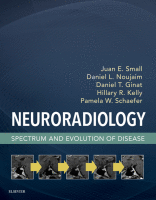Physical Address
304 North Cardinal St.
Dorchester Center, MA 02124

Introduction Chordomas are unusual tumors with seemingly unconventional traits. Most notably, they are malignant primary bone tumors but not sarcomas. They derive from embryologic cell remnants but predominantly affect late-middle-age adults, and they behave aggressively but grow slowly. Chordomas present…

Introduction Tuberculosis (TB) is classically considered an infectious disease of developing countries; however, it has made a resurgence in other areas of the world with the increased use of immunosuppressive drugs, increased immigration, and the relatively recent appearance of HIV.…

Introduction Infections of the spine are not uncommon in clinical practice. There are many terms used to describe essentially the same pathologic entity at different stages of evolution. In adults, pyogenic infections typically spread hematogenously to the vertebral endplate (vertebral…

Introduction Kummel disease was first described by Hermann Kummell in 1891 as delayed posttraumatic vertebral collapse occurring weeks or months after an often minimal injury. The mechanism is still debated. These lesions are most widely believed to be secondary to…

Introduction The ultimate goal of lumbar interbody fusion procedures is to relieve debilitating pain or prevent neurologic compromise. Fusion is achieved via the promotion of solid ossification across a lumbar disk space, known as solid arthrodesis ( Fig. 24.1 ).…

Introduction Ossification of the posterior longitudinal ligament (OPLL) is a slowly progressive disorder that can result in spinal stenosis and myelopathy. Myelopathy in patients with OPLL is related to both static and dynamic factors. The most common anatomic location is…

Introduction Hypertrophic olivary degeneration (HOD) is the result of an insult to the dentato-rubro-olivary pathway ( Fig. 22.1 ), otherwise known as the Guillain-Mollaret triangle (GMT). After an insult (infarct, hemorrhage, trauma, tumor, surgery) that disrupts the GMT, hypertrophic degeneration…

Introduction Pituitary apoplexy (PA) is a rare clinical condition presenting most commonly with acute headache as well as vomiting, visual impairment, ophthalmoplegia, altered mental state, and potentially panhypopituitarism. Occasionally it may be fatal. The syndrome is caused by hemorrhage into…

Introduction Rathke cleft cysts are cystic sellar and suprasellar lesions arising from remnants of the embryonic Rathke pouch, a structure of ectodermal origin that folds superiorly from the pharynx during the fourth week of gestation. In the sella, Rathke pouch…

Introduction The empty sella turcica was first described in 1949 as a condition where the sella turcica is only partially filled by the pituitary gland, which appears flattened against the sellar floor ( Fig. 19.1 ). Autopsy studies confirm the…